Freeze Damage to Plants
I am sure everyone is anxious to know what damage the extreme cold temperatures have done to our landscapes. Unfortunately, it is too early to tell in most cases. You will hear me repeat this, I am certain, but “time will tell”. I know it is difficult to have patience, but because there are so many factors that can influence how a plant might be affected, that is exactly what we will have to do. Try to get used to the “ugly landscape”, as we really don’t have a choice!
So, what are the things that can influence whether a plant will survive a severe cold event?
*Exposure: Plants on the north or northwest side of a structure will be the most exposed to the cold. Wind may also play a part in winter damage, and most of our winter wind in Central Texas comes from the NW. Plants located on a south or southeast exposure may receive some protection from severe cold. That is why we recommend planting “marginally winter-hardy” plants on the S-SW side of the house. A north-facing slope is considerably more susceptible to winter injury, as snow and ice will be slower to melt and the ground will be slower to heat up.
*Low-lying areas are subject to colder temperatures than adjacent higher areas.
*Snow and ice coverage of lawns, soil and plants does have an insulating effect if it happens BEFORE the freeze. Most of us had ice and snow before the bitter cold. With no snow or ice, the cold temperatures can kill the crown of the plant, especially on lawn grasses, as air temperature is colder than snow or ice temperature. In this respect, we may have lucked out.
*Well-hydrated plants are usually more tolerant of cold, as moist soils have a higher heat capacity than dry soils.
*Duration: The more prolonged a freeze, the greater the potential for injury.
*Age of plant and stage of growth: Young, recently planted trees and plants are more sensitive to cold injury. New flushes of growth are likely to be affected.
*Trees and plants that are not protected by surrounding trees and plants, but stand alone, will be more sensitive to cold injury. Understory plants are more protected and may have less injury.
*Species of Plant: Cold temperature tolerance varies widely between species. Determine the cold tolerance Zone of the specific species to see if their cold tolerance was exceeded. Consult the USDA Plant Hardiness Zone Map for the most accurate information on low temperature tolerance. 
*Timing of the freeze: Early freezes, before the plants have had a chance to “harden-off” properly, will affect plants more than those that have been receiving a gradual “hardening-off” and have become acclimated to the cold. Central Texas has highly variable winter temperatures, which makes it difficult for many species to enter dormancy. Plants that have begun to “emerge” in early spring with new growth will be more susceptible to cold damage.
*Plants in pots and raised beds will be more likely to have root damage or death from freezing temperatures than those planted in the ground. Ground soil usually provides enough insulation to moderate temperatures in case of a freeze, especially if it is moist, but if above ground in a pot or raised bed, this is not the case. Location and species play a factor in freeze damage, but I would expect the root damage to most plants in pots to be extensive.
What Can We Do After a Freeze?
It is more important to know what NOT to do after a freeze!
*DO NOT prune plants or remove plants until you have determined the extent of injury. (It is ok to prune broken branches, of course. Be sure to make the cut in the appropriate place to avoid insect and disease entry into the tree.)
*Exception: Plants that have gone to “mush” may be removed or trimmed back. These include succulents, Agaves, tropical plants and herbaceous perennials. The longer you leave them, the smellier they will get. Any annuals that have collapsed should be removed. Perennials such as Society Garlic may be clipped off at the soil line, as they may come back from the roots.
*A broad generalization: Plants that end up shedding their leaves have a greater chance of recovering from a freeze than those that hold onto dead leaves. Shedding leaves can indicate living stem tissue, and depending on species, may offer a ray of hope. Plants that hold onto leaves have stems that are likely dead.
* “Bowing of branches after the ice storm”: Trees with bowed limbs may recover after the ice melts. However, bowing can cause internal cracks or vascular system damage and limbs may not return to their normal position. Limbs may be permanently bent and therefore may require removal. I have been asked if bracing or staking may help these limbs, and my answer is “maybe”. We unfortunately cannot see the damage inside the limb, and would recommend consulting a Certified Arborist to assess the options.
*Vegetable Gardens: If you have lost vegetable plants to the freeze and are past the “window” for recommended planting of that variety, just move on. Late plantings are seldom successful. Onion tops that have “melted” can be snipped off. They may re-grow. If potatoes had started to sprout and leaves turned black, trim them off just below ground and wait for more to appear. Any veggie plants that have turned to mush should be clipped off at the soil line and composted. Do not leave them in your garden as they will harbor fungus and bacteria.
*Do not fertilize plants or lawns until they have begun “greening up” this spring. You can do more harm than good by applying fertilizer too early.
*St. Augustine lawns will likely be damaged by this freeze. Floratam is the least cold tolerant variety, but all St. Augustine varieties are likely to be affected. Be patient. Do not apply pre-emergent, post-emergent herbicide or fertilizer until the lawn has shown that it is “coming back” well. Bermuda and Zoysia lawns will require a “wait and see” approach. The ice/snow cover was beneficial as it captured ground heat and acted as an insulator. It is possible that the crown of the grass survived and may make a decent recovery. We are in untested times. Age of lawn, exposure, moisture content of soil and underlying factors such as compacted soil, disease, etc. will influence recovery.
——————————————————————————————————————————————
Plant-Specific Recommendations:
We cannot list all the plants that may have been affected, but we will try to touch on as many as possible.
Perennials:
Bicolor Iris: These appear to have been hit pretty hard. They are Zone 8b, so many will likely not come back. Watch for new growth before cutting back, but in my experience, they will not come back as full and as pretty as you’d like and are probably worth replacing.
Bulbine: As a Zone 9 plant, I would not expect these to come back. They have already “gone to mush” and can be removed.
Canna lilies: These are Zone 7-8 plants, so they may come back from the roots, especially if they were already dormant when the freeze hit. Watch for new growth to emerge. Remove the mushy growth if you haven’t already.
Chile Pequin: Woe is me. The Chile Pequins are frozen in my yard. I am hoping that it might come back from seed, but if not, I will replant. It is herbaceous in Zone 8 in typical winter.
Duranta: Well, a lovely plant, but at Zone 10 it should be treated as a tropical here.
Elephant Ear: Colocasia esculenta varieties are mostly Zone 8, and all the ones that I have seen have mushy bulbs, tubers, and rhizomes. Most Alocasia varieties are Zone 9 and are not expected to come back. If yours are not mushy, wait for new growth to appear. My experience with these is that they are very slow to come back from less severe freezes.
Esperanza: Even if well-established, this Zone 8b plant probably will not come back. Like the Pride of Barbados, it will be late to come back if it is going to, so patience is key. Cut to the ground in mid-March and wait.
Holly Fern: If these Zone 6 plants were watered and well-mulched, there is a good chance that they will return. Since they are shade plants they are probably understory, and that will help on survival. Wait for new growth to emerge before cutting back.
Jerusalem Sage: Although this is a Zone 4 plant, I think we will see losses this year due to the warm winter we experienced over the winter. It did not have a chance to harden off before this cold. It does not regrow well if cut back hard, so wait to see if it puts out new growth before making any decisions.
Lantana: With the exception of Texas Lantana (Zone 8), the majority of our hybrid Lantanas are only hardy to Zone 9 or 10. They are not likely to come back this year. They are grown as annuals in the north. I would replace them when it warms up. Few plants give as much color with such consistency.
Mexican Bush Sage, Mystic Spires Salvia: Both are Zone 7, so chances are better for them to come back, especially if mulched and watered before freeze. It is ok to remove frozen growth now.
Mealy Blue Sage: Although a tough perennial, these are Zone 8, so again, wait and watch. They have been killed in previous cold winters.
Mex. Mint Marigold: I have also lost this Zone 8 perennial in less cold winters. Remove the growth that is mushy and wait to see.
Mexican Firebush: Although this is Zone 8b, it rarely comes through a cold winter here. Location is key. Leave it until at least late March.
Orange Zest Cestrum: I am worried about mine coming back this year. Even though it is “technically” Zone 8, unless it is in a protected site, it may not return. If it does, it will usually come back from the ground, so if you see new growth from the base, cut it back to the ground.
Plumbago: As a Zone 9 plant, only plants that are well-established and in a protected location will likely come back. If they were mulched and watered before the freeze and in a S-SW location, it may be worth the wait. I am not expecting mine to come back, but hey! you never know!
Pride of Barbados: Even if well-established, these Zone 8 plants may not return. You can cut them to the ground in mid-March. Since they never show growth before the ground gets quite warm, just be patient. Replacement plants won’t be available until late spring anyway, so no need be in a rush.
Salvia greggii: Many will probably come back from the roots, as they are a Zone 6 plant. If they were in active growth, newly planted or quite exposed, they will be less likely to come back. Wait to cut back until you see new growth at the base. They can come back from a hard prune.
Society Garlic: This Zone 7 plant has gone to mush and should be clipped off at the ground. Wait for new growth to appear before you count them out.
Thryallis: These are usually hard to kill, but this might be the year. Wait for new growth to show, as these can come back from the ground if you see growth at the base. A Zone 8b plant. If it was in a protected location and mulched, there may be a chance.
Var. Flax Lily: Zone 8a, but I’ve lost these to less cold winters. It is not likely they will have survived this winter. They are worth replacing, as they are deer resistant and tolerate shade, which is rare.
Palms:
Mexican Fan Palm, Pindo Palm and Mule Palm likely won’t come back from this freeze. The Mediterranean Fan Palms in my neighborhood do not look like they will survive. We are keeping a careful watch on the more winter-hardy Windmill Palms and Florida Sabal Palms. Even our native Sabal minor has some damage, but looks a bit better if it is planted understory. Location will have a lot to do with survival. If the apical meristem is frozen, the palm will not survive. The apical meristem is located under the “spear leaf”, or newest leaf that has not yet unfolded. If you pull gently on the “spear leaf” and it pulls out easily, the palm is most likely gone. There is a slight chance that the meristem below the “spear leaf” is still alive. If you want to give it a chance, spray that area with a copper fungicide immediately after the freeze (if you missed this window it is probably too late) and once again two weeks later to prevent the area from rotting. Then wait. It can actually take several months to determine if a palm is going to recover or not. My feeling is not very positive this year about most palm trees. We are waiting to see how our suppliers “wintered” this storm, as it is likely to affect palm availability in the near future.
Sago Palms are not actually palms, nor are they likely to survive a freeze such as this, unless they are in a very protected area. Wait until at least March to remove dead fronds. Then wait. Patiently. They can be very slow to come back. I think only those that were in a very protected location may return. Maybe. Plants in pots would not be expected to survive unless they were brought inside.
Ornamental Grasses:
Our Ornamental Grasses have different hardiness Zones as well, and the best thing we can do is wait. Watch for new growth from the ground before cutting them back. If they were already cut back prior to the freeze, they lacked the insulation that the dead growth can give to the crown of the plant and may be less likely to come back. Now you know why we say to wait until late February to early March to do the bulk of your pruning!
Roses:
Roses are generally considered cold hardy in Central Texas. However, since Central Texas has had a relatively warm winter this year, many were not “hardened off” and some even showed new growth and blooms before the freeze. This all adds to the outcome.
Again, protected location, maturity of the plant and mulch and water application before the freeze all contribute to survival. Wait to see new growth emerge and prune back to healthy tissue. Roses are resilient, and unless it is a grafted rose like a Hybrid Tea that does not come back “true” below the graft, we are hoping that most healthy roses will be ok. Wait to prune until you see new growth.
Shrubs, Evergreens and Small Trees:
Anacacho Orchid: Do not prune until new growth emerges. These trees can be cut to the ground if there is still life in them, and new trunks can be selected to form a new multi-trunk tree. Expect dieback at the very least.
Abelia: Most Abelia are hardy to Zone 5, and often die to the ground in those locations. Watch for new growth to determine extent of pruning.
Arizona Cypress: I have seen little damage to these Zone 7 trees, so I am hoping for the best. Like all plants, keep a careful watch on the bark for splitting.
Bottlebrush: Zone 9 Little John and Zone 8 Scarlet Bottlebrush have succumbed to less severe winters. Zone 7 Woodlander’s Hardy deserves some patience, although the outlook is not too positive.
Boxwood: There are many different species of Boxwood, and although most are Zone 3, we may still see some bark split and even death of some plants. Again, our warm winter is to blame. Monitor for new growth and prune accordingly. Remove as little “living” growth as possible, as the plants will need this growth to produce carbohydrates for growth and recovery.
Cherry Laurel: The Cherry Laurels in my neighborhood look like they came through this freeze pretty well, although some have shown some freeze damage. They are Zone 4 trees, and unless they were newly planted or had new growth on them, they should be ok. Wait to prune until you see new growth this spring.
Common Tree Senna: These probably will not come back, but it depends on exposure. They are normally evergreen in Zone 8 winters. Scratch the trunk at the base to see if bark “slips” and watch for bark splits. I have not seen these come back from the roots.
Dwarf Yaupon Holly: These Zone 7 shrubs may turn brown and lose their leaves, but I would expect most to leaf out this spring. A light shear after leaves appear will help keep them full.
Natchez, Tuscarora and Muskogee Crape Myrtles: These were damaged or killed in the ’83-’84 freeze. It will depend on their exposure and whether the roots were killed. Wait until new growth shows, cut them back to living tissue or to the ground and be patient. Freeze-damaged trees can take some time to come back, but Crape Myrtles can be quite resilient. Other varieties are generally more winter hardy, and will require monitoring and pruning of dead twigs/branches when they leaf out.
Desert Willow: These trees are prone to breakage from heavy ice or snow. I have seen them rally after being pruned heavily from ice damage, so don’t give up too soon. Remove broken limbs now but wait until you see new growth to do any major pruning. They may be late to leaf out.
Desert Museum Palo Verde: I am sure that these will have a bit (or more) of dieback. They are Zone 8 trees (10°F). Some will have broken branches, which may be pruned now. Wait to see new growth to decide how much to prune.
Encore Azalea: Hardy to Zone 7, so I am hoping that these will just defoliate and come back. If they were in pots the chances are not as good. If they were not putting on new growth or newly planted, and were in a protected location, they will probably be fine.
Evergreen Sumac: I have never seen these exposed to temperatures this low. Many in the area have turned brown, but some, especially understory, are still green. Again, age, condition, exposure, and genetics at work. This will be a “wait and see” as well, and I am hoping that when they begin to put on new growth, we can prune them and they will revive. If the brown leaves defoliate, that is a better indication that the stems are alive. Some of mine are “scratching green”, but some are not. If new growth arrive this spring, prune accordingly. We are in uncharted territory with this one.
Fig Trees: Do not give up too early, especially if they were somewhat protected. Watch for new growth at base, and if roots survived, it may come back slowly from the roots. They are tender, so don’t be too surprised if they don’t come back.
Indian Hawthorn: Generally cold hardy to Zone 8, these have taken a hit this year. Leave them until new growth appears. I think location and variety will have a lot to do with which ones survive.
Italian Cypress: Many of these now have brown foliage, but we are hopeful that when they flush out they will recover. They are not root-hardy, however, and do not come back from the roots or flush from a hard prune into woody growth. Although they are Zone 7, this is one that we will watch.
Ligustrum, Waxleaf and Japanese: Both Waxleaf and Japanese Ligustrum are hardy to Zone 7, but the winters of ’83-’84 and ’89 killed a lot of them. We will keep our eye on these for now. Don’t prune til you see new growth.
Ligustrum, Chinese and Sunshine: Ligustrum sinense is hardy to Zone 6b, so I’m pretty sure these will just defoliate and leaf out in the spring. There may be some dieback, but established plants will probably get away with a light pruning.
Japanese Camellia: Since most of us grow these in pots, they will most likely need to be replaced. If they were in the ground in a protected S-SW location, they may revive. Zone 6-7. The warm winter may affect how hardened off they were.
Japanese Yew: I have seen some with little damage and some that are completely brown. Some of these will not come back. They do not regenerate from roots well, so if the bark is “slipping” at the base, I would go ahead and remove them. If they still have green growth, wait for new growth to make decisions on pruning. Survival may depend on exposure, as plants in northern exposures suffered the brunt of this freeze.
Junipers and other evergreens: Junipers will possibly show brown foliage, mostly towards the outside of the plant. This foliage is dead. Latent buds may grow and fill in, so wait until mid-Spring after you see new growth to lightly prune.
Loquat: Loquats have probably taken a hit this year. They do not come back from the roots, so if yours is dead to the ground and does not scratch green anywhere on the trunk, you can go ahead and remove it. If it was protected, you may have dodged a bullet.
Loropetalum: Although these evergreen shrubs are hardy to Zone 7, if they were newly planted or in active growth when this freeze hit, they are more vulnerable. At the least, they will defoliate. Wait for new growth to prune.
Oleander: Marginally winter hardy here, but often dies to the ground in hard winters. This freeze may have done them in. Wait for new growth from the ground to appear to make the decision whether to remove or cut them back. It will also be slow coming back.
Olive Trees: Olives are marginally winter hardy here. Most varieties are Zone 7-9. Arbequina Olives are Zone 7, so that is promising. They are often frozen back or killed to the ground, but this may be the freeze that does them in. Watch for new growth before deciding on how far to cut back or remove. Lightly scratch the bark to see how far back it scratches green. If the bark “slips” it is not viable tissue. If they are not a grafted variety, they may be cut back to the ground if necessary and they will come back true to type.
Pineapple Guava: These Zone 8 subtropical plants really suffer when the temperatures go below 15°F. Unfortunately, they are also slow growing, so if they did survive this freeze, it will be a few years before they recover well. I do not expect many to survive. Wait to see new growth before pruning.
Primrose Jasmine: Another one that could be dead to the ground this year, or even just dead. It may come back from the roots, so wait to see new growth from the base before deciding whether to remove it or cut it back.
Sandankwa Viburnum: Wait to see if new growth emerges before pruning. Scratch the bark at the soil line to see if it is green underneath. If the bark “slips” off like it is rotted, I would go ahead and cut them to the ground in March. It is possible they could come back from the roots. You can cut them back severely if showing green stems, but wait for new growth to arrive. I fear many will not survive.
Southern Magnolia: There are several varieties of Magnolia, some are larger than others. They are generally hardy to 5°F. Their evergreen branches may have broken in the ice and snow, and unfortunately, these trees do not “fill in” when parts of the tree are lost. Most of the ones that I have seen so far look pretty good. Again, check the trunk periodically for cracks.
Southern Wax Myrtle: What a brittle shrub! The slightest amount of ice and they will break. Remove broken branches now but wait to prune back hard until danger of freeze is past in March. These can come back fairly well if cut back hard after new growth is emerging.
Sweet Olive: The leaves turned brown and fell off my Sweet Olive, and I consider that a good sign. Wait for new growth to appear before making decisions on pruning. Zone 8
Texas Mountain Laurel: These have survived freezes in ’83-’84 and again in ’89. We know that even the most protected ones will have had their flower buds frozen. I have seen a pretty big variance in damage, depending mostly on location. The understory trees seem to have fared better, but boy do mine have a lot of broken branches! This one we will “wait and see”, as I am thinking that most will defoliate at least partially. Once we see the extent of the damage, we can make a plan on pruning. Stay tuned.
Texas Redbud: These Zone 6 trees should be fine. Since they are deciduous and had already lost their leaves, I would expect them to leaf out this spring. You may need to prune dead branch tips.
Texas Sage: There are many different species of Leucophyllum, and most are cold tolerant to Zone 8. These have certainly taken a hit, and time will tell. If the bark splits, it is not a good sign, but I have seen them come back from stumps before, so be patient. Wait for new growth from the base or on the branches before cutting back.
Yaupon Holly: Most of these have brown leaves, unless they were protected or understory. So far, the twigs are green, so if they lose their leaves they will most likely leaf out again. A light trim after they start to leaf out will be beneficial. Zone 7.
Succulents:
Agave: Most Agave species are not hardy to the temperatures we experienced. If they have “gone to mush” go ahead and remove them. I have had questions as to whether the one “spear” leaf that is still upright indicates life, and my answer is probably not. Feel the base of that unfurled leaf, and if it is soft, go ahead and remove the plant. You will do better to remove these earlier than later, as bacteria and fungi proliferate on the dead tissue and makes for a smelly mess.
Cactus: I cannot list all the varieties of cactus here, as there are too many to address and we really do not have any experience with them in this low of temperature. If they remain solid, the news is good. If they “go to mush” you should remove them.
Yucca: Again, we have many species of Yucca in Central Texas. Some will be more winter-hardy than others. In general, I think the Hesperaloes, or Red Yuccas, will be fine, although I have seen leaf damage. The Yucca rostrata (Zone 5, or -15°F) will probably be fine as well. Other species we will “wait and watch”. Do not prune off frozen growth until you see new growth from the top. If the entire plant has “gone to mush”, I think you have your answer. If the bark on the trunked species “slips” when you rub it, then the trunk is dead. Some species may send up “pups”, so you might cut the plant to the ground and wait.
Vines and Groundcovers:
Asian Jasmine: This evergreen ground cover is more winter-hardy than its relative Star Jasmine. Most plants will have brown leaves but can be mowed to 4”-6” and they should send out new growth in the spring.
Carolina Jessamine: This Zone 5 vine is pretty tough. If it is an established vine, watch for new growth to decide how far back to prune.
Coral Honeysuckle: Most Honeysuckles are hardy to Zone 4. We are hopeful that it will show signs of growth, at least from the base, but it will probably be later.
Confederate Star Jasmine: This Zone 8 vine has taken a hit in past freezes, so I would not expect any but the most protected vines to survive. The variety ‘Madison Hardy’ Star Jasmine (Zone 7) is a bit more winter hardy, so be patient to see if it is going to return. Location will have an influence.
Fig Ivy: This might ? have a chance if grown on a south-facing wall and roots are mulched. Most of them have died in past hard freezes. If they do not show signs of re-growth from the roots by the end of March, it is time to re-plant.
Passion Flower Vines have varying levels of cold hardiness. Blue Caerulea is one of the most cold hardy at Zone 7, but ‘Lavender Lady’ is only Zone 9. Only the most protected of these will likely survive. Be patient, though, as they will be late to emerge. Watch for growth emerging from the roots.
Wisteria: Hmmm. I’m not too worried about this Zone 5 vine. It is hard to get rid of anyway, so watch for new growth from the ground at the very least.
Yellow Butterfly Vine: When well-established, these are pretty tough plants. They are rated for Zone 8, and the roots may survive if planted in a protected location. I have had mine defoliate in a fairly cold winter and die back by ½ in a very cold winter. I’m not sure about this year! Newly planted vines are less likely to survive. Wait to see.
Tropicals:
Bougainvillea, Mandevillea, Tropical Hibiscus and other Tropicals: Since these are Zone 10-11 tropicals, if they were planted in the ground I think it is safe to say you can pull them out now. Even the winter-hardy bananas are likely lost this year. Plants in pots, if not protected, will need to be replaced.
Citrus:
Citrus: I grow all my Citrus in pots just for winters like this! Yes, it is fairly safe to grow Arctic Frost and Orange Frost Satsuma in the ground most years, as they are not a grafted variety and will come back “true” from their root stock if they freeze back. But even they may not survive this winter. Meyer Lemons are sometimes grown in the ground here in a protected exposure, although they are a grafted variety and will not come back “true” from below the graft. You can scratch the bark at the ground level to see if it “slips”-if so, it is probably not coming back. If it scratches green, do nothing until new growth shows. If the new growth is coming from below the graft, replace the tree. And consider keeping it in a pot.
Fruit Trees:
Apple, Peach, Pear, Plum, Nectarine, Apricot and Oriental Persimmon are hardy to Zones 4-5 if well-established.
Jujube and Nectarine are hardy to Zone 6 if well-established, and Pomegranate to Zone 7.
We really do not know what to expect from this event. As mentioned before, it will depend on location, age, general health, moisture level in soil, whether they were exposed to prior cold temps and stage of growth of the trees. Blossoms will have frozen, but some young flower buds will probably survive.
The biggest issue with young fruit trees will probably be “frost cracks” in the trunk. This is caused by wildly fluctuating temperatures and occurs on many thin barked species. Fortunately, callus tissue often covers the cracks, especially if they are not too deep. Do not spray them with tree paint. Keep the trees healthy and wait.
Shade Trees:
Deciduous trees will generally fare better in the winter than evergreen trees, as there is little movement of water into the trunk from the roots and the vascular system is less likely to freeze. Many trees have adapted with narrower xylem tissue that is also more resistant to freeze. That said, this freeze was unprecedented and without a gradual acclimation, so we are in new territory.
Live Oak: Our Live Oaks look pretty sad right now. The younger, more recently planted trees perhaps look worse. This was a VERY low temperature for them. They really don’t like it below 20°F, but they saw it in ’83-’84 and again in ‘89. But not THIS cold! I think we can expect them to defoliate fairly soon. Every location will be a different story according to microclimate, age, genetic differences, etc. Some will probably come back sooner and better than others. A healthy tree is likely to recover better than a stressed tree, and trees in groupings will have been better protected than single trees. Broken branches should be removed and painted, but no other pruning until July.
Bur Oak: This is one hardy oak! Grown in Zone 3 with no issues, and the sturdy branching and strong wood make it less susceptible to breaking in ice storms.
Mexican White Oak: Although this tree is rated a Zone 7 tree, it has taken a “hit” in previous cold winters. This is one to “wait and see”, as the ultimate outcome may not be evident for weeks to months. We are hoping the leaves will shed and trees will leaf out in March as usual. Watch the bark for cracks. Longitudinal “frost cracks” can callus over if not too deep. We are crossing our fingers on this one.
Shumard Red Oak and Texas Red Oak: I am not too worried about these, other than the sudden drop in temperature from a warm winter, then a quick warmup which could influence frost cracks. They will usually take the temperatures we had, and have the benefit of being deciduous.
Canby Oak: Although hardy to Zone 5, they did not have a chance to acclimate like their northern counterparts, and were still holding leaves when the freeze hit, so there may be some damage. Young trees have thin bark so watch for frost cracks.
Chinquapin Oak: Also hardy to Zone 5, and since they are fully deciduous, I would expect these to come through pretty well.
Cedar Elm: Although these trees are prone to breakage due to narrow branching angles, they are very winter hardy here. (Zone 6) Prune broken branches at the appropriate place on the trunk to avoid future disease issues.
Lacebark Elm: Again, a deciduous tree hardy to Zone 5. I expect most to recover well, unless they were stressed or very young.
Correction: Many of these have taken a hit and may not survive. I believe it may have something to do with having thinner bark than other trees. Wait until at least July to decide whether to remove these.
Chinese Pistache: Hardy to Zone 6a and fully deciduous, we are expecting these to do pretty well, with some pruning likely needed after they leaf out.
Obviously, we did not cover all plant damage possibilities, but have tried to touch on ones that people are concerned about or that have been damaged in past hard freezes. Please don’t hesitate to contact the nursery with additional questions, but please realize we may not have the answers! We are all in this together, and will have to wait and see how our plants will recover.


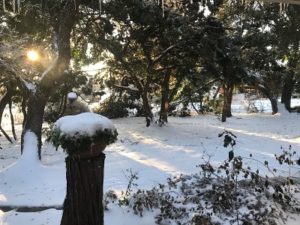
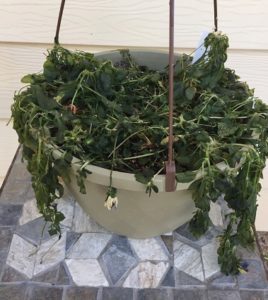
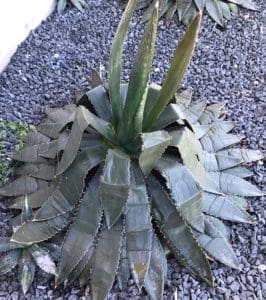

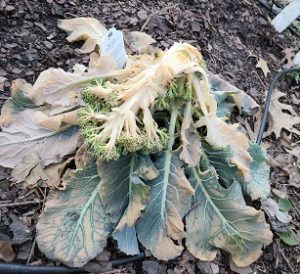
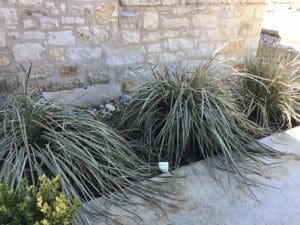
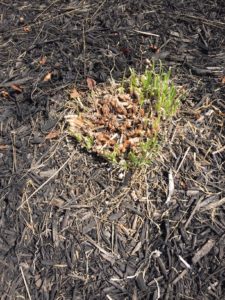

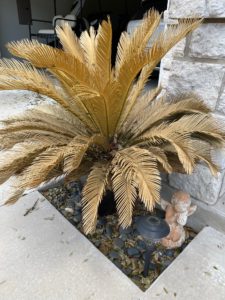

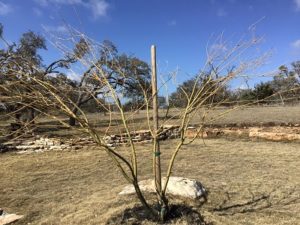



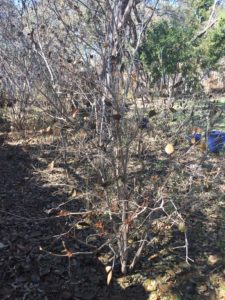
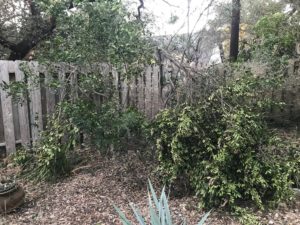
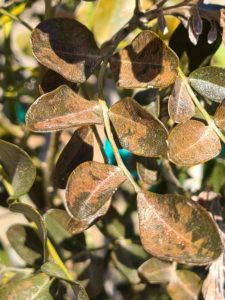
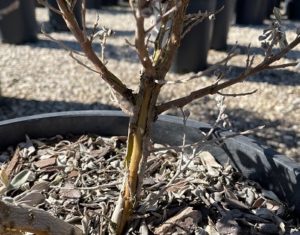
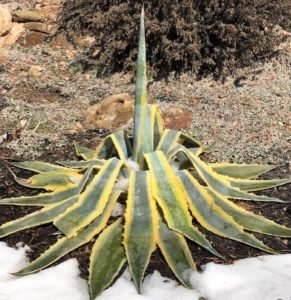
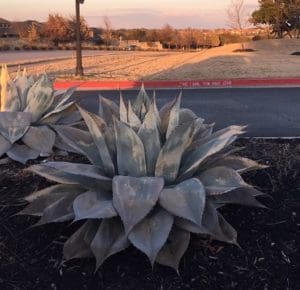

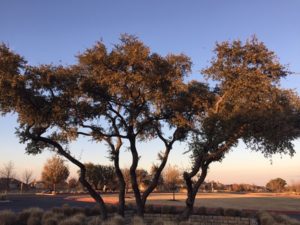


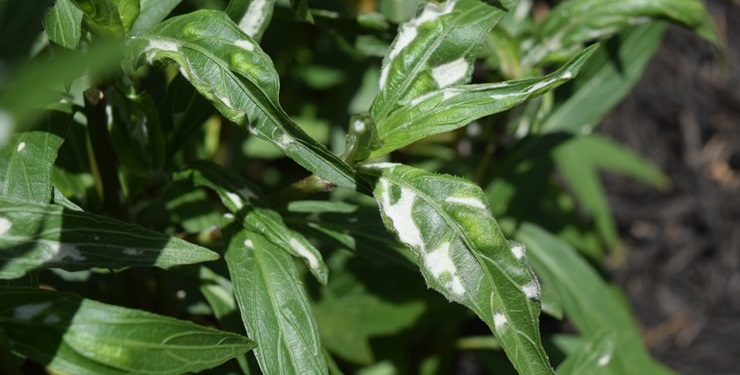
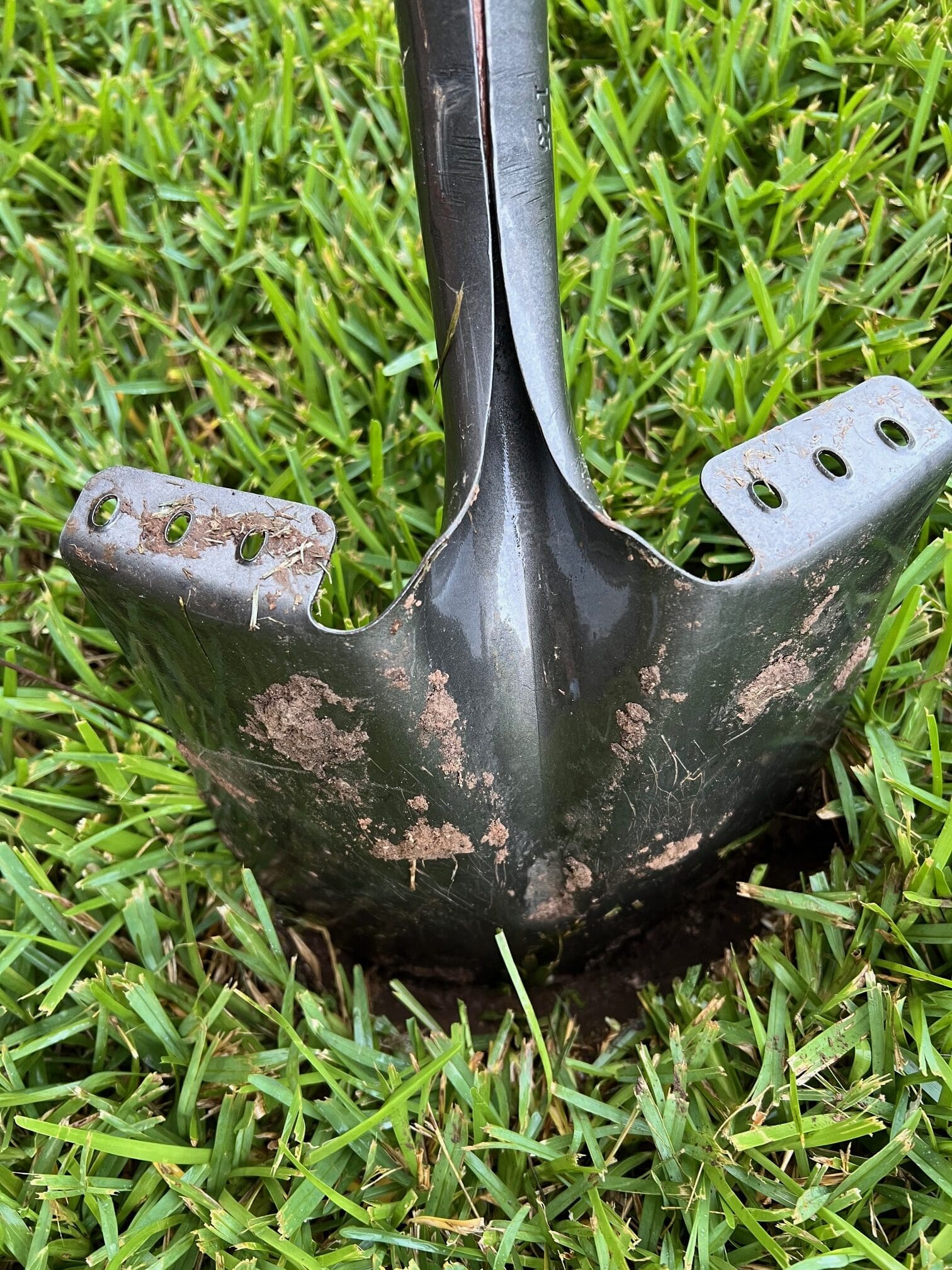
This is our first. Newsletter after moving to West Point from Vernon Tx. Very impressive and a great help in our gardening effort. Looking forward to the next newsletter and trip to your nursery.
Thank you so very much for this very helpful information. We customers can always count on great and timely advice from Backbone Valley Nursery. You guys are great, and your nursery is so very special with all that you offer your customers.
Mary,
I’d really like your thoughts on the Texas Redbud.
Thank you!
As you know, this freeze is in unknown territory. Texas Redbud is a Zone 6 plant, and it is deciduous, so the odds are in its favor for recovery. I would expect them to leaf out this spring.
Comments so helpful. I have a shrimp plant in large clay pot about 10 yrs old. Llwven though it was covered in plastic,,
leaves are black and branches drooping.
Leave alone or cut at top of pot level?
Shrimp plants in pots are less likely to come back after this freeze, as their roots were more exposed to freezing. It is a Zone 8 plant, and if it had been in the ground it might have had a better chance. In the future, I would advise against covering with plastic. Cloth is fine, but where the leaves touch the plastic they will freeze. If the entire plant is mush, you can cut it back to the ground. Then wait.
Thank you for all the information and advice. My mature whale tongues have large white ares. I’m hoping they make it. All other 8 different kinds of agaves are mush. Extra large pots of aloes mush even with layers and layers of blankets and frost cloth. My mature loblolly pines have brown needles . What about that? Got to be tough to live and thrive here. Happy gardening to you
Your pine trees will likely shed the brown needles then put out new growth this spring. We are all watching closely to see what will come back. And hoping.
Wow! You covered a lot. You gave us some great information. Thanks for spending the time to help us out.
Thank you for all the great information !
Patience is the key!! With March approaching, we are all ready to dig in the dirt. Happy Gardening!!
Thank You! This is the best article I have found- Very much appreciated.
Thank you!!! This is so helpful, very thorough! Looks like I will most likely get to do a lot of replacing this year, but…I’ll wait and see!
Very helpful and timely. Thank you.
my rosemary is turning black, should I remove it
Rosemary is not likely to have lived through this freeze. You are safe to remove it if it is black.
Absolutely excellent and comprehensive information. Thank you for the time it took to compile!
I’ve heard that we should wait until after the temperatures stay above 50 before clearing away dead plants because beneficial insects are still in there. Is that true?
Yes, that is one of the many reasons to wait to prune!
Thank you! And thank you for so much wonderful, helpful information!
Thank you! So much wonderful information. You answered many questions I have been having about my trees and plants.
Hi Mary Kay – thank you so much for the great, though discouraging article. Any advice about Bay Laurels? We have them in the ground in a fairly well protected area. Their leaves have all turned brownish-green. I was thinking we need to give them time to see what happens. What do you think?
I would give them time. You are correct that being in a protected area may help. I have had to chainsaw my old Bay Laurel to the ground in the worst of the past freezes and it has come back. I’m afraid patience is our only option.
Thank you so much for taking the time to give us this very helpful information. I was wondering about the Tangerine Beauty Crossvine. some still look greenish and the more exposed ones, more brown leaves. Any thoughts on how to judge their health and how to proceed? Thanks so much!
Crossvines are Zone 5 and are really quite tough. I would expect them to leaf out when it gets warm. You may need to prune, but I do not think they will die. (But it really depends on exposure, maturity and how cold it got where you are!)
I forgot to ask about the trees with the red berries, Yaupon Holly, I believe. We have several that have been here a long time. Their leaves are are brown, the berries and many leaves dropped. Any thoughts on their survival?
Thank you!
Planted mexican white oaks and crape myrtles this fall.
Do I continue my weekly watering?
Leaves are now dead on mexican white oaks.
Watering frequency will decrease, especially due to the lack of viable leaves on the Mex. White Oaks. Feel the soil before watering, and when it is dry several inches down, water them well. When they begin to leaf out again you will need to pay close attention to watering, as the new leaves will lose water quickly.
I have huge ginger plants around the house that are now wilted and brown. Should I cut them back or wait?
I am hoping the snow cover insulated the rhizomes below the ground. We are recommending waiting until you see new growth return to do any pruning. I know it is hard to look at, but I would wait until at least April, as we could have another freeze. The dead growth acts as an insulator as well.
Mary Kay! We miss you here in Lakeway SO much!
I have read a couple of articles that say this storm was likely a haarp event where the snow and ice may have contained aluminum and other metals. I think it was called chemically nucleated snow? If this is true, is there anything we can put down on the soil around these plants that will help combat the harmful effects? Would it help to rinse the tops with water? Our entire yard has many plants that look like they have been decimated.
Thank you so much for putting so much time and effort into explaining what we can expect from this latest weather event and what to do! we appreciate it so much!,
Juanita
Hi Juanita! I am not sure that I have enough information to give you an answer. I do know that the HAARP program has been shut down. https://www.scientificamerican.com/article/us-ionospheric-research-facility-to-close/
I personally do not believe the damage you see is related to heavy metals. All of our plants have been affected by the ‘deep freeze’, and time will tell what will be coming back. My yard looks horrific as well, but I have been through this before, and to be honest, I think some of the change will be for the positive.
Good luck and let me know if you have any specific questions.
Mary Kay
I wonder if you can say more about Asian Jasmine. our town has a ton of it as we have lots of shade and it works better than grass. Fort Worth with 150 hours below freezing and 8 hours below 0.
so lots of yards with brown AJ. must of us plant and forget, maybe mowing once a year.
is it dead or will trimming back help? of would it be just as effective to leave it be, and let it do its natural thing?
should we fertilize and when?
Yes, you should mow the Asian Jasmine as soon as you see new growth returning. It is likely to come back, so just be patient. Fertilization should not take place until after the plant has put on new growth. Use an organic fertilizer, as you do not want to stress the plant with high Nitrogen if the roots need time to recover.
Mary Kay
I found your article very interesting since my yard is my passion. I have realized that so much of what you wrote are predicted has already come to pass with many of my plants. I live in Gatesville so I am quite familiar with almost all the plants mentioned in your article. I grow many hybrid tall bearded irises. Most of those growing in the ground seem to have fared pretty well. However, I also grow many of them in large parts. Most of those seem to have been devastated completely. The leaves have turned black and the decomposition has gone all the way down into the rhizome. I also had the same experience with pansies and dianthus. Those in the ground are going to be fine but those in pots are likely not going to survive. I did have one concern about something you mentioned in your article regarding oak trees. You said to wait until July before doing any pruning. I have always heard that one should never trim Live Oak trees when the temperature is above 70° because of oak wilt. I suppose it can be done safely if one paints over the cut immediately. Thanks so much for all the great advice and insight regarding the outcome of this severe winter weather.
Pruning of oak trees should coincide with the time of year the Nitidulid Beetles, which can spread the fungus, are not active. They are not active in cold weather or really hot weather. Hence the ditty: February through June, Do not prune! This means we should prune from July 1 until January 31. These are just guidelines, as our “hot” and “cold” doesn’t always follow a schedule. I hope this clears this up for you. You should always paint the cut to avoid the odor that a fresh cut gives off that can attract the beetles.
Hello! Great information and I shared with my neighbors. Thank you! One question, should I water my plants and Cherry Laurels now? Or wait? They look a bit parched but I want to make sure I do the right thing…
The best way to answer this is to tell you to feel the soil. We have had a dry winter. If the soil is dry six inches down, I would apply at least one inch of water to trees and shrubs. I am not sure if what you are seeing is “parched” or “freeze damage”, but the soil will tell you what you need to do.
So helpful! I am wondering — I have an olive tree that seems ok but leaves are crispy and discolored — they are holding on unless you rub the stem and they fall off. Same with my bay leaf tree . . . should I leave the leaves although they are dead and getting spots (on bay leaf), and just a brownish green on the olive tree? Also I trimmed by rosemary back to a woody stump with some branches a few inches — no live leaves — should I just start over with that or wait? Thanks so much
Cannot thank you enough for all the great guidance. Would love your thoughts on Mimosas. Planted 5ft tress in Feb 2020. What are the chances.
It is impossible to predict as there are so many variable. There will be some die back. How much, I do not know. You will know when you begin to see new growth somewhere on the tree.
Mary Kay
Mary Kay thanks for such a wealth of information! Do you know if Monterrey Oaks are in the category of “if they shed their leaves they will probably be fine”?
Mine shed nearly all its leaves this week. Is there anything I can do for it besides just hoping for the best?
Yes, we are waiting for Mex. White Oaks to show new growth to see if there is any damage. We do expect them to leaf out this month.
There is nothing that you can do at this time but wait. Then prune any dead after they leaf out. Fertilize with MicroLife 6-2-4 after they have leafed out.
Mary Kay
We are hoping that there will be minimal damage. They should begin leafing out this month, so be patient and ever-hopeful!
I have to established camellia bushes that were covered in buds about to bloom. Then the freeze happened. Should I prune off the buds? Some look as if they want to open as I can see the red of the flower at the parted leaves. i love these bushes and hope they recover. Thank you for your article and for your time!
Hi Shelly,
I am surprised to hear that your buds are still showing color! If they are brown they will drop, and I would let them do that naturally. I hope your Camellias do come through this with flying colors!
Mary Kay
Hello, anyone know if the Flamboyant Trees will comeback? They are deciduous and tropical. Here in the South RGV area they were becoming popular, I have 2 Mature trees roughly 15ft in height, but they really did show signs of damage the entire meristem had oozing sap.
Flamboyant Tree, Delonix regia, is a Zone 10 tree that does not like temperatures under 40°F. I do not know how cold you got at your location or for how long, but as you probably read, the best thing to do is wait to see new growth before making any decisions.
Hi – I have about 15 Holly Ferns in my yard in Round Rock, Texas that are now completely brown. Most have only a hand full of remaining green leaves if any. Most of the stems are soft and mushy and are collapsed. However, I pruned back half of one of the plants yesterday, and found a bunch (8-10) fiddleheads buried underneath the dead growth. Should I go ahead and prune all the plants back so the fiddleheads can emerge or wait a while or what? Thanks so much for your help!
I would expect Holly Fern to return in most areas. You could go ahead and prune the dead growth as long as you cover the new fiddleheads if we have another freeze. It might be easier to remove the dead leaves without having to avoid the new growth coming up.
thank you so much! I have never heard of Backbone Nursery before, but got the link off the Central Texas Gardener. We will be driving over to check it out next month. When is the best time to come for the largest selection? I need lantana, annuals and about ten 5 gallon Japanese boxwoods.
I would give us a couple of weeks to get fully stocked. We are getting plants in as fast as we can right now.
Thank you for your helpful information. I have a yard full of very large live oak trees. They have all lost their leaves and are a thick mass on the carpet grass. My question is should I remove the leaves as quickly as possible?
Yes, it is a good idea to remove the leaves as soon as you can. The leaves will block the sun and may also cause the soil to warm more slowly, slowing down the greening up process.
May question would be on the Gardenias since they been established for 3 yrs now in a huge planter. Tops are brown leaves but the bark below is showing green. What should I do? I had saved all them from going to the dump when some one put them on the curbside almost dead.
I have seen Gardenias come back from the base successfully before, but they were not in a raised planter or in a pot. If the snow-cover insulated the bottom part of the stem, depending on the variety and other considerations, you might have a chance. I would certainly wait to see new growth, as you have nothing to lose.
It looks like I lost the citrus that are planted in the ground. What citrus (oranges/mandarin/satsumas only) can be grown in pots? Thank you.
Any citrus may be grown in a pot. We recommend keeping it in a plastic pot and setting it down inside the decorative pot so that you can move it inside for freezes. Satsuma mandarins can produce a lot of fruit, even when grown in a pot.
I have about 15 Kaleidoscope abelia which look “dead” after the heavy frost (6 degrees below in NW Arkansas). Should I wait to see if there is any sign of “new growth” before I prune back the brown foliage or should I just dig up and bid farewell?????????? I have never pruned them except for snipping the suckers.
Again, be patient. Abelia are normally hardy to Zone 6, but this was a different type of winter event. Wait to prune until spring is well underway and you see the new growth-it might even be May in your location. Then you will know how far to cut them back.
Hi Mary Kay,
All of my sandankwa viburnums (I have a LOT of them) are now rust colored brown. We have cut down half of them, but left the hedge. On the ones we cut down, we knew we were taking a chance but decided to sacrifice them because they were in a central location and were 10 feet high of brown ugliness. We cut them down so we see how far down the damage went. Even at 6 inches from the ground, the stems are brown interior but some of them were seeping after the cut. We will replace those with a heartier species. There is no new growth at all. Is there ANY chance that they will send shoots up from the roots eventually? If there is a chance, we will leave the hedge intact. I have been spraying the hedge with a strong stream of water which knocks off the loose ones with the idea that the sun will be able to reach the inner part of the plants. Some of the interior leaves are a very dull brown green. Is there ANY chance these will survive? We have landscape crew set to come in and trim the hedges down to a foot in height on Monday March 15, or should we wait longer?
Also, how long will it take for the live oaks to releaf? I pray to God this storm did not kill them as well?
This has been. traumatizing event for us because our yard had reached an absolutely gorgeous stage of growth and maturity before this storm and now it looks like it has all been decimated. I would appreciate any advice you could give me.
Thank you!
Juanita Bussmann
Sending email.
I. Live in Bee Cave Texas. Will my loropetalum return? Should I trim?
Please be patient. I think that many Loropetalum will return, but you should leave them alone until you see new growth. I have seen them come back from 3″ stumps before. We aren’t into official spring yet, so I would wait until at least April to make a decision.
Hi Mary Kay – Can you give any more details on the star jasmine? Like most, mine have turned bronze and flat green. Some leaves have fallen off but the ones still on the vine are just sad and wilted. They’re so tall! Should I cut them all the way down to the ground? Get rid of all of it? Thank you!
Again, it will depend on how protected the vine was, if snow cover insulated the bottom six inches and the roots and whether it was a Madison Hardy Star Jasmine, which is a bit more winter hardy than the species. You can scratch the stems to see if there is any green underneath, but I suspect there is not. It is now a waiting game. You should wait until you see new growth to trim it, as trimming may stimulate new growth before we have another freeze (it is still possible!) Wait as long as you can.
After the freeze this year our sandankwa viburnum have brown leaves and they smell like dog poop. Is there any hope of cutting them back and they can survive>
It is possible that they will come back from the roots. Wait until April to cut them back, then wait again to see new growth. Patience is key this year.
Sorry if this was mentioned in comments, but we have a 30 ft Bay Laurel. It looks, well, corpse-like, and we are devastated. Any chance of life?
Thanks so very much for providing us with your vast wisdom!!!
I have lost my Bay Laurel tree down to a stump in past historic freezes. It has never seen these low temperatures before. Again, wait to cut it back until you see green so that you do not stimulate new growth that may be lost in a late freeze. Good luck.
Hi Mary Kay –
Our primrose jasmine has been in need of serious pruning for some time. It appears to have been hit pretty hard by the freeze; we’re wanting to know whether it is ok to go ahead and prune and see if it comes back or if we should wait. We’d hate to lose it and don’t want to make matters worse, but now seems like a good time to cut it back. Any thoughts appreciated!
Wait to prune until you see new growth at the base. Some will come back from this and some will not. Do not prune now as it will stimulate new growth that may be hit by a late freeze.
Ok. Thanks!
Any ideas on how Vitex Trees may survive this? I love their purple blooms…
Vitex should survive. You will most likely need to prune it back to living tissue. Wait until you see the extent of the damage to decide how to prune. I have seen them cut to stumps and return.
Hi Mary Kay – should I fertilize my crepe myrtle trees? They are established – 8 + years. When I scratched a larger branch, there was green in the bark. Thank you!
We do not recommend fertilizing any plant this year until it begins to put out new growth. Use MicroLife 6-2-4 fertilizer with beneficial microorganisms and mycorrhizal fungi to assist the roots in the uptake of water and nutrients.
Hello. We have trailing rosemary that is black. What snd when do I tend to?
Rosemary does not come back from the roots and does not come back from severe pruning into woody growth. I am removing my Rosemary now.
During one electric outage my greenhouse had no heat for over 12 hours during the coldest night of the storm. I have yet to water any of the plants since they all look dead. They are dry. Should I water them or just assume they won’t come back?
Thank you.
It would be helpful to know the species of plants that you are concerned about. Bougainvillea and other tropical plants would not be likely to come back.
It is good to allow them to dry between waterings if the tops have frozen back, but if there is any hope at all I would water infrequently until you are sure.
Mary Kay,
do you think the terrible freeze possible killed the ball moss that is infesting our live oak trees? If so, that would be one positive outcome of the bad weather we had!
I’m afraid the ball moss has more survival skills than some of the other plants in the area. I looked closely at some of the ball moss (Tillandsia recurvata) on my trees, and they definitely have green growth on them. And I’m pretty sure all the seeds they dispersed would have survived as well. I also get questions about insects surviving the freeze, and I’m afraid my answer is the same. They also have a lot more survival skills than you would think!
We have a large 30 year old red yucca with so much leaf damage that it would be difficult to prune out. Is it better to cut back and if so, what height? It does have green leaves, too.
I think you might be better off if you dig it up and divide it. It will be easier to remove the brown leaves that way, and you will be able to decide which plants out of the clump will have a better chance of survival. Probably the ones toward the center, where they were more protected. I divided a large, old Red Yucca years ago and now have them in several places in my yard. I re-planted the divisions in groupings of three and they are quite nice. Get as much root as possible. I do it the same way I dig up and divide Bicolor Iris. Dig a trench around the perimeter with a grubbing hoe, then use a shovel to cut under the clump to get as much of the roots as possible. They are quite forgiving, but after this freeze I would get as much root as you can. Re-plant them at the same depth they were planted in the original clump.
I appreciate all your information and advice. A wealth of knowledge going into this unprecedented Spring. Thank you again, have referred your Website to many friends and coworkers.
I have a Senna tree that is holding on to it’s (brown) leaves, as I scrape the wood not seeing any green. I purchased a Forest Pansy Redbud as a replacement. Curious if I should go ahead and pull or would a little time and patience be worth while. Any advice would be greatly appreciated.
My experience with Common Tree Senna is that it is not usually a long-lived tree. It succumbs to soil fungi and is sensitive to saturated soils, specifically our torrential rains that we sometimes experience. I do not have any experience with them coming back from a freeze like we had, but I suspect that it would be safe to pull it and replace at this point.
Good Morning, I have a very long row of Star Jasmine on a fence line. 11 plants total. Very well established. Every plant has bark splitting on almost every trunk. Are they toast? Or is there any hope?
Thanks.
There is really no way to tell for certain. I suspect most will be toast, but there might be some in a protected microclimate that may survive. The snow cover may have insulated the bottom 6″ of the vine and the roots as well. My Star Jasmine didn’t look too bad after the freeze on the protected side of the fence, but has since turned brown. I’ll wait a while before I replace mine, but as I said, they are probably gone.
Loropetalum Carolina Midnight Flowering Shrub with Fuchsia Flowers will they survive the freeze? They look pretty brown and was facing the North side of the house.
Loropetalum Carolina Midnight Flowering Shrub with Fuchsia Flowers will they survive the Dallas Freeze? They are very brown.
The only thing you can do is wait. Do not prune, do not fertilize until you see new growth. It is a bit unlikely that they will come back in Dallas, but we had about the same low temps in Central Texas and we are going to wait to see. I have had them return from stumps before, so it might be worth the wait.
Thank you for sharing your information. Newspaper articles do not address our native plants. Since we have a very shaded yard, about 35 years ago we planted Cast Iron Plants that harbor lizards and other creatures. Some leaves are turning brown but most are still bent over from the weight of the ice and snow. Should we go ahead and cut back to the ground?
You don’t say where you live, but in Central Texas we usually have to remove the “spent” leaves from Aspidistra (Cast Iron) in the spring. If all the leaves are looking bad, you can certainly remove them by mid-March in Central Texas. If you live elsewhere, consult you local County Extension Service for your last freeze date before removing the leaves.
Will my Muhly Grasx survive? I live in Mc Kinney Tx.
Gulf Muhly may. It all depends on how long it has been established, location, snow cover, etc. Bamboo Muhly is less winter-hardy. Time will tell. Watch for new growth before cutting back for best results.
Will soft leaf mahonia come back? I have lost all the leaves?
Soft Caress Mahonia is a Zone 7 plant. It is better that it lost leaves and did not hold onto them. You should see some new growth in the next month, so be patient and wait to see how far back to prune.
A lot of very helpful information. I have 10 loropetalum that are a dominant part of my
landscaping. I see new growth at the bottom of the plants. Some of new growth on
various parts of the plant. Since it’s June, should I prune & how much. The growth on
each plant needs to be consistent. I’m really at a loss on what to do. I live in Round Rock.
It is very difficult to answer your question without seeing the plants. You may email photos to info@backbonevalleynursery.com Generally, you may prune Loropetalums back fairly hard if the root systems are established. With the freeze, we are still learning how much the root systems have been affected so we need to tread lightly. I will get back with you after you send the photos.
Hi! Thanks for the informative article. Many of my plants have come back, although sadly, and not unexpectedly, my beautiful twisted trunk hibiscus died so completely that it was easy to just pull it out of the ground by hand.
I have two “water oaks” in my front yard that look different and are “recovering” differently than the live oaks in the rest of the neighborhood. The live oaks seem perfectly fine and normal now. My water oaks still have a completely dead canopy, with fuzzy green growth coming from the trunk and the larger branches, closer to the trunk and spreading out from there. How and when should I prune these trees? I’m not even sure what to cut off and what to leave.
Hi Alison,
Where do you live? We do not have Water Oaks in Central Texas! Could they be Post Oaks?
The growth you are seeing is called “epicormic shoots”. They arise from buds beneath the bark.
It is best to wait this year out. If your trees have 50% growth in July/August, there is a chance that they will leaf out adequately next year.
There is no way to predict the outcome, as we cannot see under the bark to examine the vascular system.
I would wait until next spring to make decisions. Then ask a Certified Arborist to come out and assess the trees.
First, thank you for your expertise in all things plants!
I bought and planted two 12 ft Mexican white oaks from your nursery in June 2019. They are approximately 30 feet apart. This past February’s freeze has had very mixed results on these two trees. One of them is growing nicely. There are dead limbs but there are plenty of new limbs and much new growth. I feel good about it.
However, the other tree seems to be dead above the ground and is sprouting about a dozen or so branches from the roots themselves. That leaves me in a bit of a quandary and with a question.
Should I cut the deadwood and leave the suckers to grow? Do the trees from your nursery use route stock and so am I seeing a different type of oak coming from the roots. They’ve grown very fast. About 3 feet since the spring started.
What do you suggest?
Hi Thad. First, we recommend that you do NOTHING to your trees this year except water. Broken limbs may be removed. Any growth that is being produced is manufacturing carbohydrates that will be stored and used next spring. In general, if your tree has at least half of its leaves by the end of July, there is a good chance that it will leaf out better next spring. The root sprouts will be identical genetically to the tree. Mexican White Oaks are not grafted on a different root stock. However, they are grown from seed (acorns) so each tree will be different genetically from another. It is difficult to grow a tree back from root sprouts. You would have to choose a dominant leader next year and gradually remove the other sprouts. The attachment is usually weak, and the tree may be subject to breakage at the base. You may want to wait until next year to decide on the root sprouts, but if the trunk is dead, you could remove it now.
Good morning Mary Kay,
First of all, that write up was tremendous. We just recently had a freeze just east of Tampa, FL, and most of our plants fared well as they are native and established.
I wanted to ask about your thoughts on clusia hedge damage. I’m in zone 9b, and have had a pretty established clusia hedge around my property since 2019. The bushes are approximately 5-7 feet tall and thick, watered with misters.
I could not cover them due to their size and length of the hedge (500ft), and several professionals recommended running the misters for hours during the early to late morning to protect the roots and trunks.
My hedges have become brown and wilted looking on the exterior, but still have bright green leaves on most of the inner branches. Out temperature dropped to approx 28° F for 4-5 hours.
I am sure you’re busy, but would love your opinions opinion on if I lost my hedges if you have a moment. Thanks and I appreciate the article again, I have it bookmarked for future sharing and referencing.
Hi Nick,
I have read about the freeze and snow in Florida recently. I can certainly relate. I’m afraid the only thing that you can do is wait. Do nothing. Do not cut them back right away. Wait until you see new growth, either from the main trunks or from the roots. We were pleasantly surprised with several species that appeared lost when they began to revive. So much depends on the pre-conditioning to cold, the health of the plants at the time of the freeze, the moisture levels in the soil and the plant, microclimate, etc. There is no magic prediction that we can make. Time will tell. Good luck with your plants.